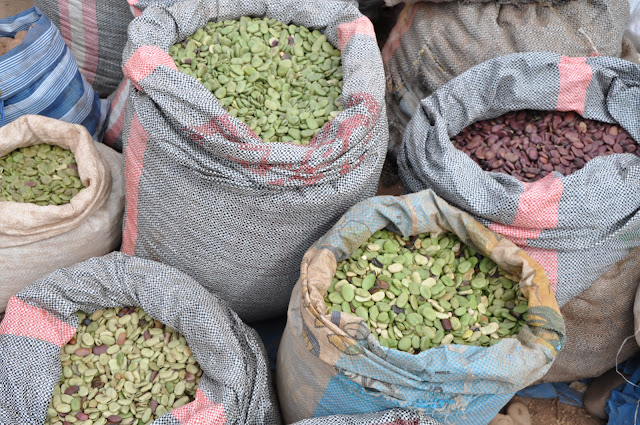Doesn't this photo of the peppers look familiar? I remember taking a very similar photo at an Ontario farmers' market. But that's where the similarity stopped. The rest of the market looked very different from anything I'd seen. We stopped by this farmers' market on the way to Cusco to catch a glimpse of local life.
Even these squashes looked slightly familiar
 |
| Add caption |
But not this farmers' transport - never seen a Honda like this one!
Nor farmers' like these...
These long grass-like plants look like guinea pig food
Now that's a familiar sight - little kid eating ice cream!
But not all these varieties of potatoes
or corn
Two Peruvian women were buying young chicks to raise at home. It's cheaper than buying full grown chickens.
A happy sheep farmer

Sharing a break
Yummyum...

Dried peppers
All kinds of beans
And of course, quinoa!
It was an eye-opening experience, and I hadn't even shown you the photos of the raw meat...
For more on Peruvian food, cooked, go to my food blog http://www.foodsparks.blogspot.ca

























































